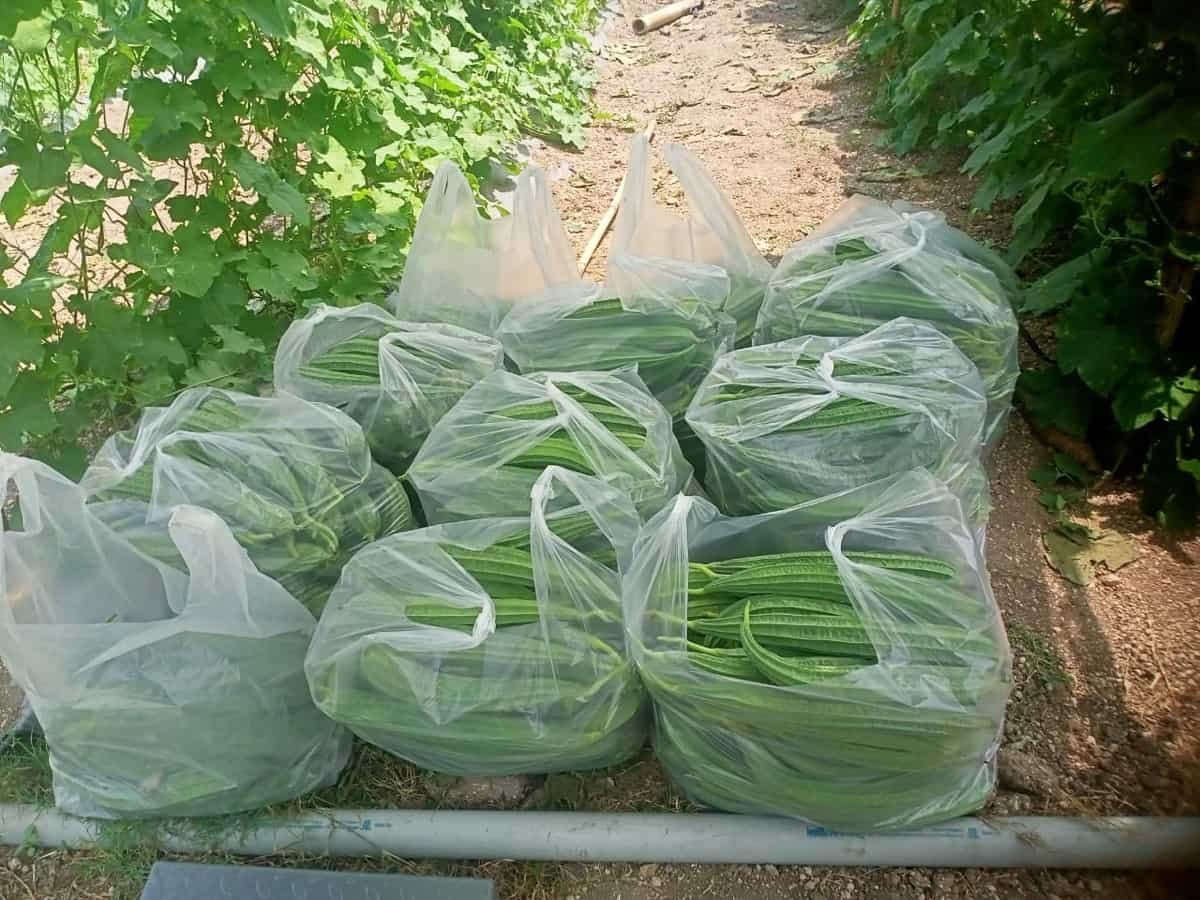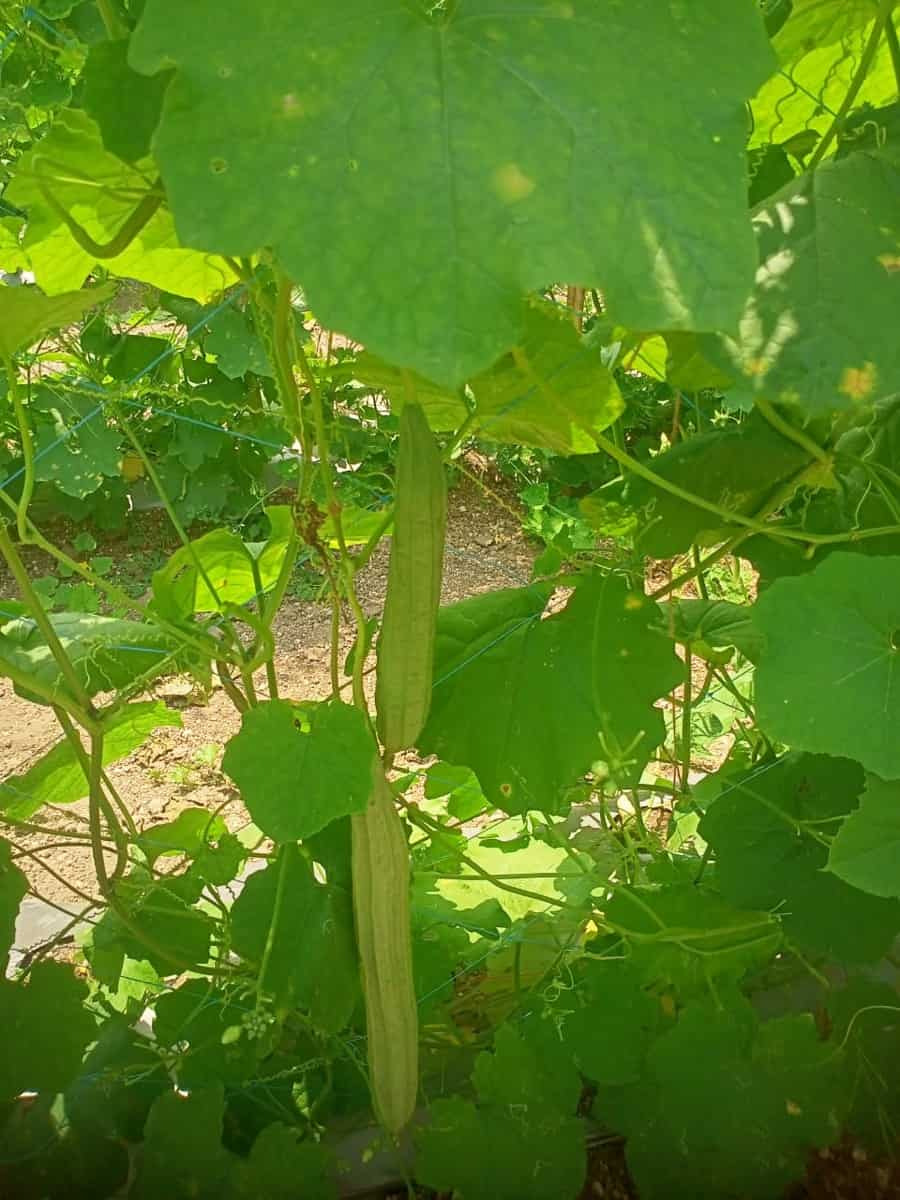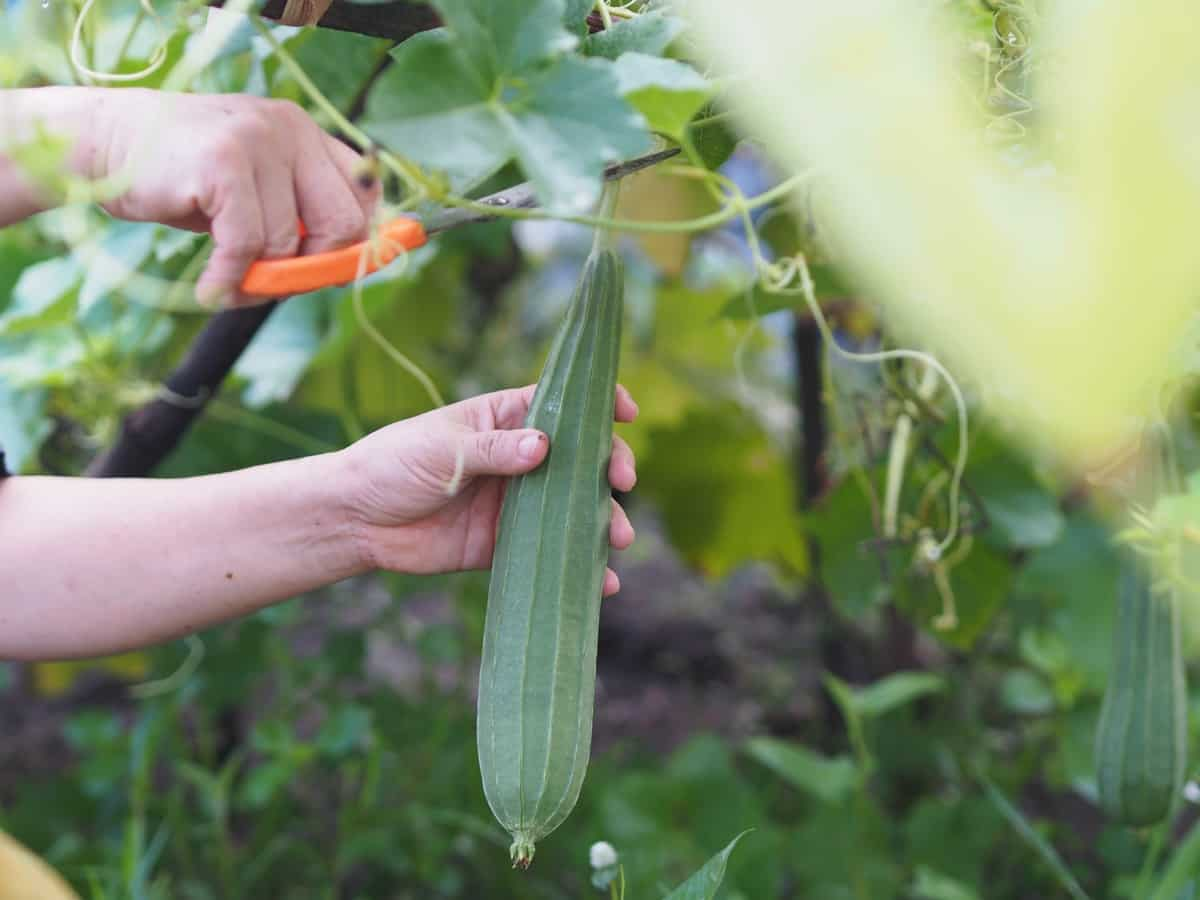Ridge Gourd plants are popular in many gardens due to their fast growth rate, low maintenance requirements, and delicious yields. However, like plants, they are susceptible to various challenges that can hinder their overall health and productivity. By implementing proper cultural practices such as providing adequate sunlight, well-draining soil, regular watering, and maintaining a clean growing environment, you can significantly reduce the risk of many diseases and pests affecting your Ridge Gourd plants.

Problems with Ridge Gourd Plants
Preventing Ridge Gourd Vine Borers: Natural Remedies
Ridge Gourd vine borers can be a frustrating problem for gardeners, as these pests can quickly damage and destroy your plants. However, there are several natural remedies that you can use to prevent and control this issue. One effective way to deter vine borers is by using beneficial nematodes.
These microscopic worms naturally occur in soil and feed on the larvae of many garden pests, including vine borers. Another natural remedy is planting marigolds nearby. The strong scent of marigolds repels many pests, including vine borers. Interplanting with herbs like Basil or Mint can also help deter these pests.
Dealing With Powdery Mildew on Ridge Gourd Leaves
Powdery mildew is a common problem that many gardeners face when growing ridge gourds. It is a white, powdery coating on the plant’s leaves, stems, and fruits. The fungus responsible for this disease thrives in warm and humid conditions. To tackle powdery mildew on Ridge Gourd leaves, it’s important to take action early on. One effective natural remedy is to spray baking soda and water onto the affected parts of the plant.
This solution helps to disrupt the growth of the fungus. Applying organic fungicides such as neem oil or sulfur-based products can also aid in combating powdery mildew on Ridge Gourd plants. By being proactive and implementing these strategies early on, you’ll be able to minimize damage from powdery mildew and keep your Ridge Gourd plants healthy throughout their growing season.
Controlling Pests on Ridge Gourd Plants Organically
Controlling pests on Ridge Gourd plants can be challenging, but it’s important to remember that organic methods are available to help keep these pesky critters at bay. Introducing beneficial insects into your garden is one of the most effective ways to control pests naturally. These helpful bugs, such as ladybugs and lacewings, will feast on the harmful pests that are damaging your Ridge Gourd plants.
Another organic pest control method is homemade insecticidal sprays from natural ingredients like neem oil or garlic. You can apply these sprays directly onto the leaves of the plants to repel and kill pests without harming beneficial insects or pollinators. Crop rotation is another technique that can help prevent pest infestations.
By rotating where you plant your Ridge Gourd each year, you disrupt the life cycle of many common garden pests and reduce their populations over time. Regularly checking your plants for signs of pest damage is crucial for early intervention. Look out for chewed leaves, holes in fruits, or sticky residue left behind by aphids or other sucking insects. Keeping your garden clean and free from weeds can help reduce hiding places for pests and make it easier to spot any potential problems before they become major infestations.
Identifying and Treating Ridge Gourd Fruit Rot
Identifying and treating Ridge Gourd fruit rot can be crucial in maintaining the health and productivity of your plants. Fruit rot is a common problem when fungi or bacteria invade the fruit, causing it to decay and become unpalatable. One way to identify fruit rot is by examining the affected fruits for any signs of discoloration, soft spots, or a foul smell. The rot may start as small brown or black lesions on the surface of the fruit, which gradually spread and cause further deterioration.
It’s important to take prompt action to treat Ridge Gourd fruit rot. Start by removing any infected fruits from the plant immediately to prevent the spread of disease. Make sure to dispose of them properly, away from your garden area. In addition, improving air circulation around your plants can help reduce humidity levels and discourage fungal growth. Prune any overcrowded branches or leaves that could be blocking airflow. Watering at ground level rather than overhead can also minimize moisture buildup on foliage.
Managing Nutrient Deficiencies in Ridge Gourd Plants
Nutrient deficiencies can hinder the growth and productivity of Ridge Gourd plants. Without the proper balance of essential nutrients, these plants may become weak and disease-resistant. Fortunately, there are ways to manage nutrient deficiencies and ensure your Ridge Gourd plants thrive. One common nutrient deficiency in ridge gourds is nitrogen. This vital nutrient is responsible for leaf and stem growth, so if you notice stunted or yellowing leaves, it may be a sign of nitrogen deficiency.
To address this issue, apply organic fertilizers rich in nitrogen, such as composted manure or blood meal. Another crucial nutrient for Ridge Gourd plants is phosphorus. To rectify this deficiency, add bone meal or rock phosphate to the soil before planting or use a liquid phosphorus fertilizer during the growing season. Potassium deficiency can also impact Ridge Gourd plants by causing weak stems and decreased resistance to pests and diseases.
In case you missed it: How to Increase Female Flowers in Ridge Gourd: Explained in 10 Simple Steps

Incorporating potassium-rich amendments like wood ashes or potash-based fertilizers can help alleviate this issue. In addition to these macronutrients, iron, manganese, zinc, and copper are equally important for healthy plant growth. If you observe symptoms such as leaf discoloration or abnormal growth patterns on your ridge gourds’ foliage, consider applying chelated micronutrient sprays according to package instructions.
Regularly monitoring your soil’s pH levels is also crucial because certain nutrients may become less available outside an optimal pH range (usually between 6-7). Adjusting soil acidity with lime (to raise pH) or sulfur (to lower pH) will promote better nutrient absorption by the roots. Remember that prevention is better than cure when managing nutrient deficiencies in ridge gourds.
Preventing Ridge Gourd Plant Wilting and Drooping Leaves
One common problem Ridge Gourd plant growers often encounter is wilting and drooping leaves. This can be a sign of stress or insufficient plant water supply. It’s important to ensure that your Ridge Gourd plants receive adequate hydration to prevent this issue. Make sure you provide enough water to your plants regularly. Ridge gourds require consistent moisture in their soil, so watering them deeply once or twice a week is crucial. However, avoid overwatering as it can lead to root rot and other fungal diseases.
Organic materials like straw or shredded leaves make excellent mulch choices. Another factor that contributes to wilted and drooping leaves is excessive heat exposure. If you notice your Ridge Gourd plants suffer from sunburn or heat stress, consider providing some shade during peak hours of sunlight by using shade cloth or strategically placing potted plants. Inspect your Ridge Gourd plants regularly for signs of pests or diseases causing leaf wilting. Insect infestations such as aphids or spider mites can weaken the plant’s health and contribute to leaf drooping.
Identifying and Treating Ridge Gourd Leaf Spot Diseases
Identifying and treating Ridge Gourd leaf spot diseases is crucial for maintaining the health and productivity of your plants. Leaf spots are common fungal infections that can cause significant damage if left untreated. Alternaria leaf spot is one of the most common leaf spot diseases in Ridge Gourd plants. Small, dark brown or black lesions on the leaves characterize this disease.
These spots may enlarge and merge as the infection progresses, leading to defoliation and reduced plant vigor. To identify Alternaria leaf spot, closely inspect your Ridge Gourd leaves for any signs of discoloration or irregular spotting patterns. If you notice these symptoms, taking immediate action is important to prevent further spread. Treating Alternaria leaf spot involves a multi-pronged approach.
First, remove and destroy any infected leaves to prevent the fungus from spreading. Next, improve air circulation around your plants by pruning overcrowded foliage or trellising vines. This will help reduce humidity levels and create an unfavorable environment for fungal growth. In addition to cultural practices, a fungicidal spray can effectively control Alternaria leaf spot.
Managing Excessive Vine Growth in Ridge Gourd Plants
One of the common problems that Ridge Gourd growers face is excessive vine growth. While having a vigorous and healthy plant is desirable, too much vine growth can lead to overcrowding, decreased sunlight penetration, and hinder fruit development. Regular pruning is essential to control excessive vine growth. Removing side shoots and maintaining only the main stem ensures better air circulation and prevents the plant from becoming tangled. Providing proper support for your Ridge Gourd plants is crucial.
Sturdy trellises or cages will help guide the vines upward instead of sprawling on the ground. Applying organic fertilizers with balanced nutrients can promote healthier foliage while limiting excessive vegetative growth. Avoid high-nitrogen fertilizers as they encourage more leafy growth than fruit production. Ensuring adequate spacing between plants during planting will allow each plant to receive sufficient sunlight and airflow necessary for optimal growth.
Dealing With Ridge Gourd Blossom End Rot
One common problem that Ridge Gourd growers may encounter is blossom end rot. This frustrating condition occurs when the bottom of the fruit becomes discolored and rots, rendering it inedible. It’s disappointing for any gardener who has put time and effort into nurturing their plants. Blossom end rot is often attributed to calcium deficiency or fluctuations in soil moisture levels. When enough calcium is available to the plant, it affects cell wall development and leads to the blossom end rot.
In case you missed it: How to Grow Ridge Gourd in Greenhouse: A Step-by-Step Guide for Seed to Harvest

To address blossom end rot, it’s important to maintain consistent soil moisture levels by watering regularly. Mulching can also help retain moisture and regulate temperature fluctuations around the roots. In terms of addressing calcium deficiency, adding lime or gypsum to the soil before planting can help increase calcium availability. Additionally, using a balanced fertilizer with adequate amounts of micronutrients like boron and magnesium can aid in preventing nutrient imbalances that contribute to this condition.
Conclusion
Ridge Gourd plant growers must be aware of common problems affecting their plants. Lack of pollination, bitter fruits, pest infestation, and poor fruit yield are some of the issues that may arise during cultivation. Regular monitoring and implementing integrated pest management techniques can control pests effectively without harming the plants or environment.
Additionally, practicing good hygiene in the garden and promptly removing infected plant material can reduce infestations. With patience and care, you’ll be able to overcome these challenges and enjoy a bountiful harvest of delicious ridge gourds.
- Feed Your Flock for Less: Top 10 Tips to Save on Chicken Feed
- Ultimate Guide to Ossabaw Island Hog: Breeding, Raising, Diet, and Care
- Hatching Answers: The Top 10 Reasons Your Chickens Aren’t Laying Eggs
- Eggs and Economics: Breaking Down the Cost of Raising Backyard Chickens
- Defend Your Greens: Proven Methods to Keep Iguanas Out of Your Garden
- Ultimate Guide to Cinnamon Queen Chicken: A Comprehensive Guide for Beginners
- Ultimate Guide to California Tan Chicken: Breeding, Raising, Diet, Egg-Production and Care
- Ultimate Guide to Marsh Daisy Chicken: Breeding, Raising, Diet, and Care
- 10 Types of Chicken Farming Businesses You Can Start for Profits